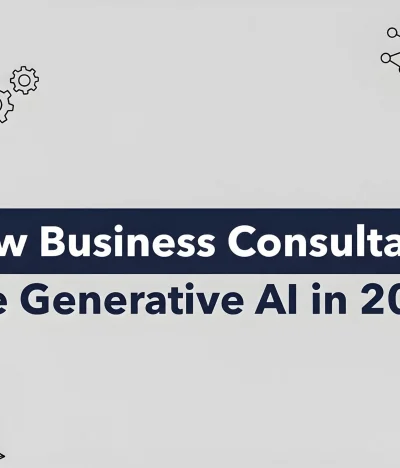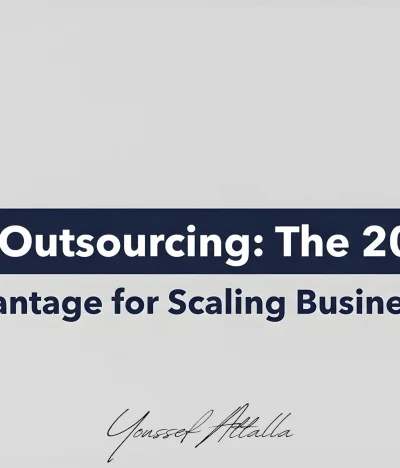In today’s rapidly evolving digital landscape, automation is no longer a futuristic concept it’s a present-day necessity. From streamlining routine tasks to enabling smarter decision-making, automation is transforming how organizations function at every level. Whether you’re a small startup or a global enterprise, leveraging automation can be the key to staying competitive, agile, and scalable.
Why Automation Matters in Modern Business
The pace of change in business is accelerating, and manual processes are no longer sufficient to meet growing demands. Automation matters because it drives efficiency, reduces errors, and frees up valuable time for teams to focus on strategic priorities. It’s not just about saving time; it’s about enabling innovation and delivering better results.
For example, workflow automation helps eliminate repetitive tasks, allowing employees to concentrate on high-value activities. In areas like HR services and financial management, automation streamlines data entry, onboarding, and payroll processes ensuring both accuracy and compliance.
Top Operational Areas Being Transformed
Automation is making waves across nearly every department. Some of the top areas experiencing transformation include:
- Customer Service: AI-powered chatbots and ticketing systems provide 24/7 support, improving customer experience and reducing workload on human agents.
- Finance: Tools are automating invoice processing, budgeting, and reporting, minimizing human error and enhancing oversight.
- Marketing: With marketing automation, businesses can now segment audiences, trigger campaigns based on user behavior, and analyze performance all with minimal manual intervention.
- Sales: CRM systems with automated tracking and follow-up features help sales teams close deals faster.
- Supply Chain: Sensors and automation tools improve inventory tracking, order fulfillment, and logistics, reducing delays and overhead.
How Automation Enhances Business Scalability
One of the standout benefits of automation is its ability to support business growth. As companies expand, managing operations manually becomes increasingly unsustainable. Automation allows for:
- Standardized processes across departments.
- Reduced operational costs as tasks scale without needing a proportional increase in manpower.
- Faster turnaround times, helping businesses meet higher demand efficiently.
This is especially valuable for companies involved in business development, where scaling outreach, reporting, and performance tracking becomes essential as operations grow.
Key Automation Technologies to Watch
Several cutting-edge technologies are powering the automation revolution:
- Robotic Process Automation (RPA): This technology mimics human actions to complete rule-based tasks such as data entry, claims processing, or report generation.
- Artificial Intelligence (AI) and Machine Learning (ML): These tools can analyze vast datasets to identify trends, predict outcomes, and make recommendations.
- Cloud-based Automation Platforms: Services like Zapier or Microsoft Power Automate integrate different software systems, automating workflows across platforms.
- IoT (Internet of Things): Especially in manufacturing and logistics, IoT devices automate physical processes and deliver real-time insights.
Building an Automation Roadmap for Your Organization
Introducing automation into a business should be strategic, not spontaneous. A successful roadmap includes:
- Assessment: Identify which tasks are repetitive, time-consuming, and prone to human error.
- Prioritization: Focus first on high-impact areas where automation will deliver immediate benefits.
- Pilot Testing: Roll out solutions gradually, starting with a test group to fine-tune the system.
- Training & Adoption: Ensure teams understand the tools and how automation will improve not replace their roles.
- Continuous Improvement: Gather feedback and optimize your approach over time.
This is where a skilled Business Consultant can offer immense value, guiding companies through both technological choices and change management.
Measuring ROI and Performance Improvement
Measuring the return on investment (ROI) from automation is crucial. While cost savings and time reduction are easy to quantify, other benefits like improved customer experience or faster scalability also play a role.
Key performance indicators (KPIs) to monitor include:
- Time saved per process
- Error reduction rates
- Increased output or capacity
- Employee satisfaction and reduced burnout
- Improved customer response time and satisfaction scores
Tools that support business process automation often include built-in analytics dashboards, making it easier to track these metrics over time.
The Role of AI in Operational Automation
AI is a major driving force behind next-generation automation. It takes automation beyond simple task execution to intelligent decision-making.
For example, AI can analyze customer behavior to personalize marketing campaigns or predict demand trends to optimize inventory management. It can also help in employee recruitment and performance evaluation key areas of HR services through smart screening and predictive analytics.
The integration of AI ensures that businesses don’t just automate they automate intelligently, aligning outcomes with strategic goals.
How to Evaluate Automation Tools for Your Business
With a growing number of automation tools on the market, choosing the right one can be overwhelming. Here are a few tips:
- Define Your Needs: Understand your business goals and what problems the tool should solve.
- Ease of Integration: Ensure compatibility with your existing systems.
- User-Friendliness: Look for platforms with intuitive interfaces that don’t require deep technical knowledge.
- Scalability: The tool should grow with your business.
- Vendor Support: Reliable customer support and training resources are essential.
Evaluating tools with these criteria helps avoid investing in solutions that don’t deliver tangible benefits.
Avoiding Common Automation Pitfalls
While automation offers numerous advantages, it’s not without challenges. Here are common pitfalls to avoid:
- Automating the wrong processes: Not every task is suitable for automation. Some require human judgment or flexibility.
- Neglecting change management: Without proper training and communication, employees may resist new systems.
- Lack of monitoring: Once automation is implemented, it must be tracked and refined. “Set it and forget it” doesn’t work.
- Underestimating costs: While automation can save money, upfront investments in tools and training must be planned.
Proper planning and expert guidance help businesses implement process automation without these setbacks.
What’s Next: The Future of Automated Operations
As technology evolves, the scope of automation will only expand. Trends to watch include:
- Hyperautomation: The convergence of AI, RPA, and analytics for end-to-end business automation.
- Voice-activated workflows: Powered by natural language processing (NLP), these will make human-machine interaction more seamless.
- Autonomous operations: In sectors like manufacturing and logistics, machines will begin making real-time decisions with minimal human input.
For businesses looking to stay ahead, keeping up with innovation and investing in smart automation strategies is not optional it’s essential.
Conclusion
Automation is no longer a luxury; it’s a foundational element of modern business success. Whether it’s improving workflows, reducing operational costs, or enabling smarter growth, automation empowers organizations to do more with less.
Companies that embrace this shift strategically supported by the right tools and guidance will lead the next wave of innovation and efficiency.
Whether you’re just starting or looking to grow, Youssef Attallah brings the blueprint, leadership, and results you need.





